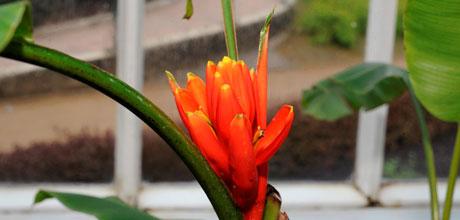Scarlet Banana Delicious to the Eye
This article was first published on 18 Oct 2012.

Musa coccinea
Not all banana plants are grown for their edible fruit; some species are grown for their decorative flower displays and are more of an ornamental than a plant of commerce. Musa coccinea is one such species. It never produces edible bananas but is well worth growing for the vivid flower display.
Native to Indochina, it’s sometimes referred to as the scarlet banana or red torch banana, due to bright scarlet red bracts that surround the flowers. Flowers are yellow with green tips which swell over time, producing pinkish coloured fruits.
A relatively small species of banana, it usually attains a height of only about 2m or less. It has thin stems with leaves about 1 metre in length, and will form a clump of multiple stems with time.
A conservatory with plenty of sunlight and warmth is the best condition for growth and flowering. Shade from other plants will still allow the banana plant to grow well but it may not flower. Use a good, moist, free draining soil with plenty of organic matter or compost. If you fertilise regularly during the warmer growing months the plant will thrive.
Scarlet banana flowers are often a favourite with florists as the cut stems will survive in water for a few weeks and, being tropical, they do not need to be kept cool to remain fresh.
Musa coccinea can be seen flowering in the east wing of Dunedin Botanic Garden’s Winter Garden Glasshouse in the corner closest to the Information Centre.
Stephen Bishop is curator of the winter garden glasshouse at Dunedin Botanic Garden.


